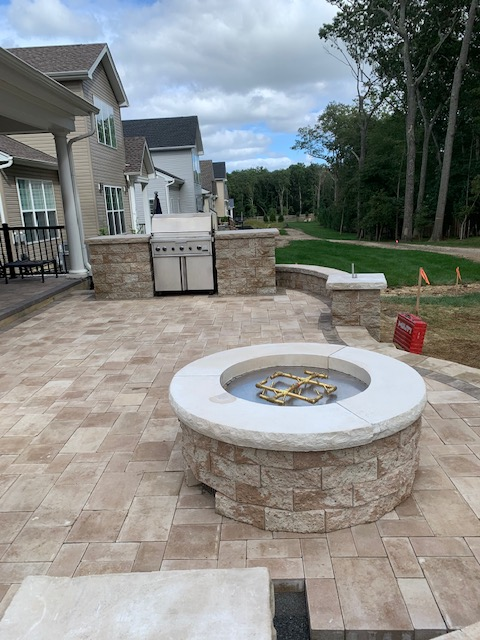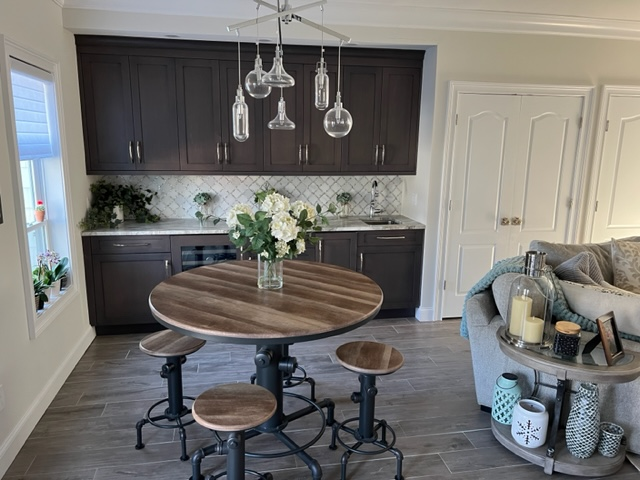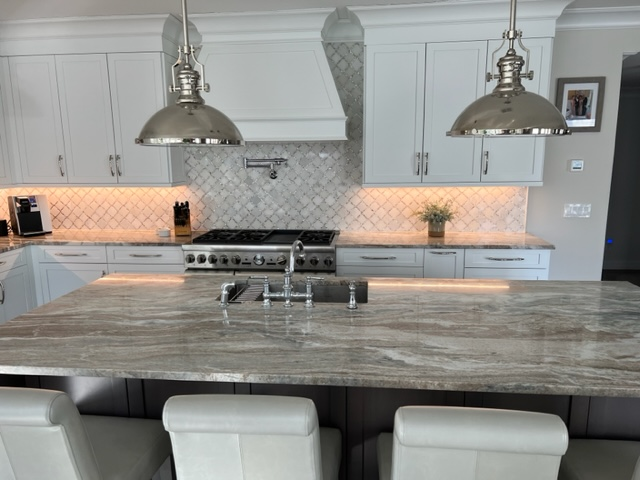In an era where environmental consciousness and financial prudence take center stage, you can’t overstate the significance of home energy efficiency. In this comprehensive blog, we embark on a journey towards understanding and implementing practices, such as roof replacement and siding repair, which lighten the burden on your wallet and tread gently on our planet.
As the world grapples with the ever-increasing challenges posed by climate change, each individual’s contribution matters. Our homes, the very cores of our daily lives, have the potential to become pivotal hubs for positive change. This guide goes beyond the usual tips for energy-saving; it delves into the intricacies of transforming your living space into an energy-efficient haven.
Whether you’re a homeowner, a renter, or even just an energy-conscious individual, this guide offers adaptable solutions you can tailor to suit any living situation. A more energy-efficient home isn’t just about saving on bills – it’s a commitment to sustainability and a gift to future generations.
Read on to explore some effective strategies in more detail.
8 Ways to Make Your Home More Energy-Efficient
1. Upgrade to Energy-Efficient Appliances
Upgrading to energy-efficient appliances, such as Energy Star-rated refrigerators, LED lighting, and programmable thermostats, offers a multitude of benefits that enhance your daily living and contribute to a sustainable future.
These appliances, designed with advanced technology, consume significantly less energy than their conventional counterparts, reducing utility bills. This financial advantage alone makes the initial investment worthwhile.
Beyond cost savings, energy-efficient appliances also play a pivotal role in minimizing environmental impact. Lower energy consumption translates to reduced greenhouse gas emissions, aiding in the fight against climate change.
Moreover, these appliances often boast smart features that allow you to monitor and control usage remotely, optimizing energy usage even further. Incorporating energy-efficient appliances into your home can lead to improved comfort and convenience.
These appliances perform with high efficiency, ensuring consistent and reliable operation. Additionally, they generate less heat during usage, contributing to a cooler indoor environment, especially during warmer months.

2. Improve Insulation
Enhancing insulation around the house is a cornerstone of elevated energy efficiency, yielding a range of substantial benefits. This simple yet impactful measure acts as a robust barricade, preventing undesirable heat exchange between the interior and exterior environments.
By bolstering insulation, homeowners can curtail the need for excessive heating or cooling, as the indoor temperature remains more stable, regardless of external conditions. This reduction in reliance on heating and cooling systems directly translates to marked savings on energy bills, offering financial respite in the long run.
Moreover, a well-insulated home diminishes the carbon footprint, contributing to a greener environment. The minimized energy consumption aligns with sustainable practices, reducing the strain on natural resources and power generation. This benefits the homeowner and contributes to the larger global effort to combat climate change.
Furthermore, improved insulation translates to augmented comfort within the living spaces. Eliminating drafts, hotspots, and cold zones fosters a cozy atmosphere year-round. The tranquil indoor environment enhances the overall quality of life and well-being of the occupants.
3. Switch to LED Bulbs
Switching to LED light bulbs for your household lighting needs is a simple yet impactful way to enhance energy efficiency. These modern marvels offer a plethora of benefits that extend beyond their illuminating capabilities.
Unlike traditional incandescent bulbs, LEDs convert more energy into light while emitting minimal heat. This brightens your living spaces effectively and reduces wasted energy in the form of heat production.
LEDs are renowned for their longevity, outlasting incandescent bulbs significantly. This longevity translates to fewer replacements, curbing resource consumption and minimizing the environmental footprint.
Moreover, LED bulbs consume substantially less electricity, leading to noticeable reductions in energy bills. You contribute to a greener planet while enjoying substantial savings over time by making this transition throughout your household.
4. Regular HVAC Maintenance
Regular HVAC maintenance plays a crucial role in enhancing energy efficiency throughout your home. Your heating, ventilation, and air conditioning (HVAC) system is the heart of indoor comfort, and its optimal functioning directly impacts energy consumption.
Over time, dust, debris, and pollutants accumulate within the HVAC system, causing it to work harder to deliver the desired temperature. This buildup restricts airflow, leading to decreased efficiency and higher energy consumption.
You ensure your HVAC system operates at its best by scheduling routine maintenance, such as cleaning or replacing air filters, cleaning coils, and inspecting ductwork. A well-maintained HVAC system operates more efficiently, requiring less energy to achieve the same comfort level. This directly translates into reduced energy bills.
Additionally, regular maintenance helps identify and address minor issues before they escalate into major problems. A properly tuned system consumes less energy and extends its lifespan, saving you from premature replacements.

Investing in HVAC maintenance is a proactive step towards a greener and more cost-effective household. It conserves energy and contributes to a healthier indoor environment by maintaining optimal air quality. Ultimately, the small effort and cost of regular maintenance pay off by delivering significant long-term energy savings while ensuring your home remains a comfortable oasis.
5. Seal Air Leaks
Sealing air leaks around the house greatly enhances energy efficiency and reduces utility costs. These inconspicuous gaps and cracks can collectively amount to a significant loss of heated or cooled air, putting extra strain on HVAC systems and consuming more energy than necessary.
By addressing air leaks, homeowners can experience immediate benefits. Firstly, sealing these openings prevents drafts, which can create discomfort and uneven temperatures throughout the house.
Secondly, it aids in maintaining a consistent indoor climate, ensuring that the warmth or coolness produced by heating and cooling systems remains inside rather than escaping through gaps.
Moreover, the financial advantage of sealing air leaks cannot be understated. The reduction in energy consumption directly translates to lower utility bills. Over time, the accumulated savings can make a substantial difference in household expenses.
This practice also contributes to a greener environment by reducing the overall demand for energy production, subsequently lowering the carbon footprint associated with a home.
In conclusion, sealing air leaks isn’t merely a matter of plugging holes; it’s a strategic investment in energy efficiency. Occupants can relish improved comfort, reduced energy bills, and a positive impact on the planet by fortifying a home’s thermal envelope.
6. Use Energy-Efficient Siding
Energy-efficient siding is vital for any homeowner looking to enhance their home’s energy efficiency and reduce utility costs. This innovative siding offers a range of benefits that go beyond mere aesthetics.
Primarily, energy-efficient siding acts as a robust insulating barrier, effectively preventing outdoor temperatures from permeating indoor spaces. It reduces the need for excessive heating or cooling by minimizing heat transfer through walls, thereby curbing energy consumption.
This translates to lower energy bills and contributes to a reduced carbon footprint, promoting environmental sustainability. Furthermore, energy-efficient siding materials are durable and tightly sealed. This characteristic prevents drafts and air leaks, maintaining a consistent indoor temperature.
Consequently, the HVAC systems operate more efficiently, as they don’t need to compensate for temperature fluctuations, leading to extended equipment lifespan and additional savings. The choice of siding material also plays a pivotal role in reflecting or absorbing solar heat.
Light-colored sidings reflect sunlight, keeping the house cooler during hot months, while darker shades absorb warmth during colder periods. This dynamic responsiveness to external conditions optimizes energy usage year-round.
In conclusion, energy-efficient siding stands as a wise investment for homeowners aiming to bolster their property’s energy efficiency. Beyond its visual appeal, it offers tangible and long-lasting advantages, fostering economic and ecological well-being.
7. Invest In Roof Replacement
Roof replacement is not just about enhancing the aesthetic appeal of a home; it also plays a crucial role in boosting energy efficiency. An aging or deteriorating roof can result in energy leaks, causing discomfort and soaring utility bills. Opting for a roof replacement can significantly improve insulation, leading to notable energy savings.
Modern roofing materials offer advanced insulation technologies that create a thermal barrier between the interior and exterior of a home. This barrier prevents the escape of heated or cooled air, reducing the need for constant HVAC usage.
Homeowners can mitigate the effects of external temperature fluctuations By upgrading to energy-efficient roofing materials such as reflective coatings, cool roofs, or insulated shingles,
Furthermore, a well-insulated roof contributes to a more consistent indoor climate, minimizing the strain on heating and cooling systems. This translates to financial savings and reduces the overall carbon footprint.
With the escalating concerns about environmental sustainability, a roof replacement aligns with the global drive towards energy-efficient living. In conclusion, a roof replacement serves as a strategic investment for homeowners aiming to enhance their property’s energy efficiency.
The benefits extend beyond financial gains to encompass environmental responsibility and improved comfort. Individuals can create a cozier home while actively pursuing energy by harnessing innovative roofing solutions.
 ‘
‘
8. Switch to Renewable Energy
Switching to renewable resources around the house is a pivotal step toward enhancing energy efficiency and fostering a sustainable future. Households can significantly reduce their carbon footprint and contribute to a greener planet by embracing renewable energy sources such as solar panels, wind turbines, and geothermal systems.
Solar panels harness the power of the sun to generate electricity, reducing dependence on fossil fuels and lowering energy bills. Wind turbines, strategically placed in wind-rich areas, convert wind energy into a clean power source, further curbing greenhouse gas emissions.
Geothermal systems utilize the Earth’s natural heat to regulate indoor temperatures, drastically reducing the need for traditional heating and cooling methods that consume vast amounts of energy.
Transitioning to renewables lessens the strain on non-renewable resources and stimulates economic growth by fostering innovation and job creation within the renewable energy sector. As renewable technologies evolve, their costs continue to decrease, making them more accessible to homeowners.
Collectively, these efforts promote a sustainable lifestyle while showcasing that small changes at home can significantly impact global environmental challenges. Households play a pivotal role in steering the world towards a cleaner, more energy-efficient future by adopting renewable resources.
The Bottom Line
All in all, embracing home energy efficiency isn’t just a financially savvy move. It’s a vital step towards a greener future. You hold the power to significantly cut costs while making a positive impact on the environment by implementing the strategies outlined in the post above.
From simple changes like sealing air leaks to more substantial investments in energy-efficient siding and roofs, each action accumulates into a substantial reduction in your carbon footprint.
Reliable Roof Replacement and Siding Repair Contractors in Tinton Falls
Want to transform your home into an energy-efficient haven? Dive into the various home improvement services brought to you by Pro Star Restoration, including residential siding repair and roof replacement.
We have years of experience, offer quality services, and ensure every homeowner can afford our offerings. In addition to Tinton Falls, our services also extend to Asbury Park. Moreover, our team of professional contractors is second to none in terms of expertise and skills and ensure s ajob well done every single time.
Get in touch with us to explore more about our offerings and take your first steps toward creating a more energy-efficient future for your family.


